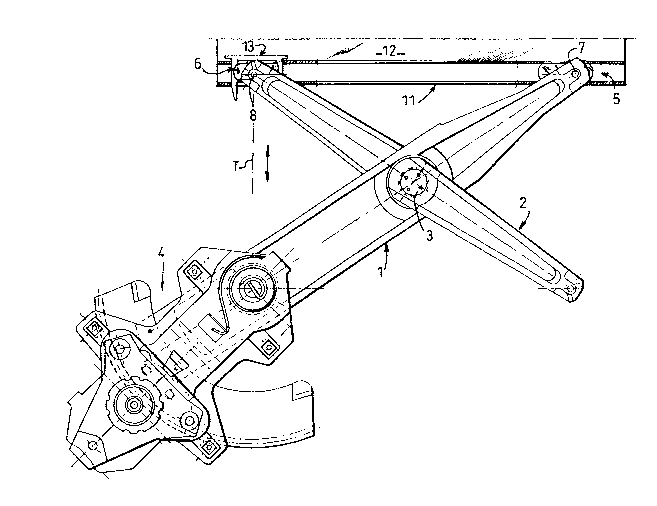Some of the information on this Web page has been provided by external sources. The Government of Canada is not responsible for the accuracy, reliability or currency of the information supplied by external sources. Users wishing to rely upon this information should consult directly with the source of the information. Content provided by external sources is not subject to official languages, privacy and accessibility requirements.
Any discrepancies in the text and image of the Claims and Abstract are due to differing posting times. Text of the Claims and Abstract are posted:
| (12) Patent Application: | (11) CA 2094216 |
|---|---|
| (54) English Title: | WINDOW SUPPORT DEVICE IN A MOTOR VEHICLE WINDOW WINDER AND WINDOW LIFTING MEANS INCLUDING THIS DEVICE |
| (54) French Title: | SUPPORT DES GLACES D'UNE VOITURE; DISPOSITIF D'OUVERTURE/FERMETURE DES GLACES COMPORTANT CE SUPPORT |
| Status: | Deemed Abandoned and Beyond the Period of Reinstatement - Pending Response to Notice of Disregarded Communication |
| (51) International Patent Classification (IPC): |
|
|---|---|
| (72) Inventors : |
|
| (73) Owners : |
|
| (71) Applicants : |
|
| (74) Agent: | PASCAL & ASSOCIATES |
| (74) Associate agent: | |
| (45) Issued: | |
| (22) Filed Date: | 1993-04-16 |
| (41) Open to Public Inspection: | 1993-10-23 |
| Availability of licence: | N/A |
| Dedicated to the Public: | N/A |
| (25) Language of filing: | English |
| Patent Cooperation Treaty (PCT): | No |
|---|
| (30) Application Priority Data: | ||||||
|---|---|---|---|---|---|---|
|
ABSTRACT
This device comprises arms (1, 2) arranged in X
configuration, a shaped rail (11) inside which there are
mounted rollers (5, 6) to which are articulated the ends
of the arms (1, 2), one (6) of the rollers being provided
with means for blocking in the rail whilst the other
roller (5) can slide in the latter; the means for block-
ing the said roller (6) comprise an elastic clamp (13)
with two branches (14) shaped so as to be able to cap the
opposite ends of the roller, and through-holes for these
branches are made in the walls of the rail so that the
said branches pass through the rail from one side to the
other, clamping the roller between them. This clamp is
easy to install and can be fitted to existing rollers,
which avoids the use of special components and therefore
decreases the manufacturing costs of the device.
Note: Claims are shown in the official language in which they were submitted.
Note: Descriptions are shown in the official language in which they were submitted.

2024-08-01:As part of the Next Generation Patents (NGP) transition, the Canadian Patents Database (CPD) now contains a more detailed Event History, which replicates the Event Log of our new back-office solution.
Please note that "Inactive:" events refers to events no longer in use in our new back-office solution.
For a clearer understanding of the status of the application/patent presented on this page, the site Disclaimer , as well as the definitions for Patent , Event History , Maintenance Fee and Payment History should be consulted.
| Description | Date |
|---|---|
| Inactive: IPC from MCD | 2006-03-11 |
| Time Limit for Reversal Expired | 1995-10-16 |
| Application Not Reinstated by Deadline | 1995-10-16 |
| Deemed Abandoned - Failure to Respond to Maintenance Fee Notice | 1995-04-17 |
| Inactive: Adhoc Request Documented | 1995-04-17 |
| Application Published (Open to Public Inspection) | 1993-10-23 |
| Abandonment Date | Reason | Reinstatement Date |
|---|---|---|
| 1995-04-17 |
Note: Records showing the ownership history in alphabetical order.
| Current Owners on Record |
|---|
| ROCKWELL AUTOMOTIVE BODY SYSTEMS - FRANCE |
| Past Owners on Record |
|---|
| PATRICE CARDINE |